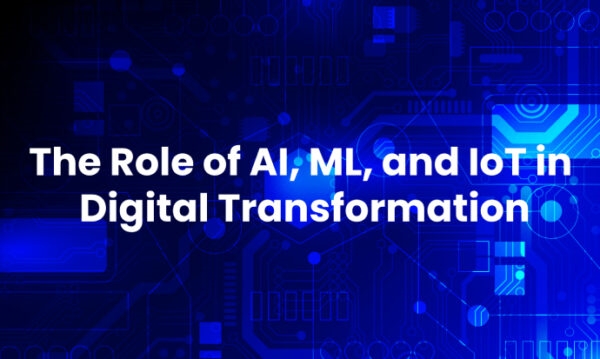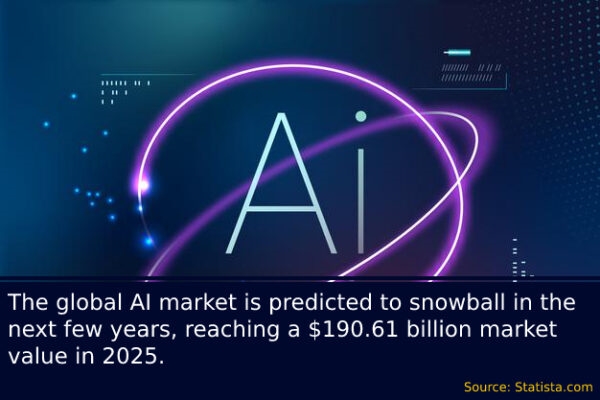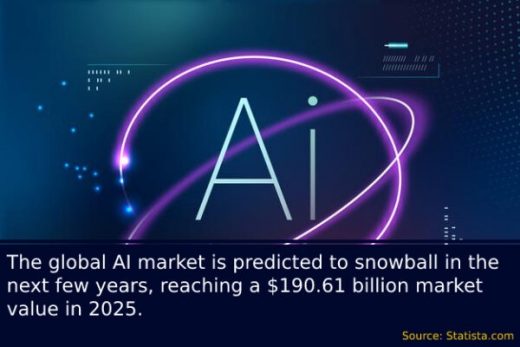The Role of AI, ML, and IoT in Digital Transformation

A lot of noise and misunderstanding exists in the user marketplace about what digital transformation is, and the roles that artificial intelligence (AI), machine learning (ML) and the Internet of Things (IoT) play in implementing it.
Digital transformation is of major importance to businesses and organizations. Alphabet, a driving force in the digital marketplace, reported record profits in the second fiscal quarter of 2021 based on very strong digital ad sales, internet searches, and the growth of cloud services. Many companies have recognized the importance of digital transformation as a key strategy to gain a competitive edge in the marketplace.
Digital Transformation
Digital transformation is a process that has been ongoing for decades whether businesses have focused on it as a paradigm shift in the way business is conducted or not. Email, ERP platforms, cloud computing, digital advertising, online retailing, telehealth, working remote and video streaming are a few examples of businesses and processes that have undergone digital transformation. All these changes were made possible by transformation to digital processes.
Businesses and organizations have begun to realize that digital transformation can be planned and implemented proactively to be more competitive, enhance customer experiences, and improve processes that are customer touch points. AI and ML tools and the IoT channel are readily available for the planning and implementation of a proactive digital transformation strategy.
Role of AI and ML
AI and ML are tools that can be used to plan and implement a digital transformation that focuses on what is needed to gain a competitive edge with customers now and in the future. They help companies develop comprehensive strategies for data transformation based on real-time market intelligence rather than piece-meal tactics of disjointed updating of systems and processes.
ML uses big data to analyze and correlate patterns which can offer insights into customer behavior and other events. It provides insights on solutions to improve business processes and customer experiences. Instead of finding out about a change in customer behavior after sales have already declined, ML can help to identify shifts in behavior and events as they happen so solutions can be devised to head off a decline in sales.

AI uses algorithms to create or adjust programs to take advantage of the insights gained with ML. AI mimics human intelligence to identify and react to behavior and events. Programs based on insights to behavior and events from ML can improve customer experiences and business processes.
Using AI and ML in planning and implementing a digital transformation puts businesses and organizations in position to stay ahead of the curve. With AI and ML information is analyzed in real-time to increase responsiveness to changes in customer behavior and events, and make business processes including IT operations more efficient.
Digital transformation directed and driven by AI and ML enables the gathering and analysis of data to better understand customers to help accelerate introduction of new products and services.
With AI and ML data transformation has become a constantly evolving process, providing insights and responses to the ever changing dynamics of customers and the marketplace.
Role of IoT
The IoT is the network of objects that have software, sensors, smart devices and other instruments incorporated in them to link and exchange data with other systems and devices over the internet. It is the channel for gathering data used in AI and ML, and for interacting with customers by way of the “things” in IoT to improve customer experiences and business processes. The internet and all the things it connects provides the ability to implement digital transformation. IoT is the conduit that makes data-driven, intelligent data transformation possible.
Conclusion
Businesses and organizations face two choices when they contemplate digital transformation. They can make decisions on digital transformation that are not coordinated or supported by market data, or base digital transformation strategies on the constantly evolving real-time data gathered via the IoT and analyzed and responded to with AI and ML. The organizations that choose the latter approach will gain competitive advantage in the marketplace.
Business & Finance Articles on Business 2 Community
(24)


